Aluminum is a prevalent metal we use every day. It is crucial, from our house door handle to our office window frames. We even use it in our kitchen, as well as in electric gadgets or large machinery. Aluminum surface finishes ensure the durability of these aluminum products.
In this article, we will briefly discuss aluminum surface finishes and focus on different types of surface treatment. We hope this article can be the best guide on your journey. So, let’s get started.
What are Aluminum Surface Finishes?
Metals, like aluminum, are prone to rust or contaminants. That’s why we need many different ways to treat aluminum surfaces. Over time, people invented various types of aluminum surface finishes.
Aluminum surface finish typically alters aluminum’s appearance, texture, and performance quality. It makes aluminum better in many ways. In addition, these methods also give aluminum a better look.
The surface treatment methods are different in process and technique used. For example, anodizing aluminum creates an oxidation layer. On the other hand, e-coating uses charged paint particles to make it. Dry or liquid painting can be applied directly to the aluminum surface. So, the specific type of method depends on the intended use.
Aluminum surface finishes are trendy in many industries. For example, in buildings, anodized and PEO aluminum are trendy. In the car industry, e-coating and painted aluminum are essential. Polished, brushed, and bright-dipped aluminum in consumer electronics makes nice gadgets.
Although there are other types, they are also commonly used in many applications. We will learn about them briefly in the later sections.
Why Do You Need Aluminum Surface Finishes
Aluminum is a fantastic material. It is lightweight, strong, and versatile. But it has its vulnerabilities. That’s where aluminum surface finishes come into play. There are several reasons why you need aluminum surface finishes.
Corrosion and Wear Resistance
Aluminum doesn’t naturally rust or corrode. However, it might be easily oxidized and corroded in some situations. Aluminum surface finishes allow you to fight against it.
Besides, surface finishes like chrome plating, anodizing, or PEO can withstand wear and abrasion. People also use these aluminum parts for machinery and industrial purposes.
Better Look
The aluminum surface finish allows you to make colors, designs, or text on aluminum. You can draw anything you like. Popular methods are painting, e-coating, anodizing, and more.
Improved Mechanical Qualities
Particular finishes can increase the hardness and strength of the aluminum surface. The strongest type is PEO-coated aluminum. Anodizing and chrome plating are also trendy in this case.
An aluminum surface finish protects metal parts from dents, scratches, and other damage. This protection generally increases the lifespan of the metal part.
Ease of Upkeep
Over time, dirt, dust, and other impurities may build up on the surface of the aluminum. However, if the part has a surface finish, it can be easy to clean and maintain.
Improved performance in many Applications
Aluminum surface finish also prepares metal parts for many uses. For example, polishing or sandblasting gives it better adhesion. Chrome plating and PEO coating give it better strength. Anodizing offers better corrosion resistance. So, based on different applications, you can choose the correct type of aluminum surface finish.
12 Popular Types of Aluminum Surface Finishes
As you know, surface treatment is crucial for aluminum parts. It improves the aluminum part’s quality. However, there are many ways to do this. The following 12 types are the most popular in modern manufacturing:.
Each type has its own unique benefits and limitations. The exact method may depend on your specific projects. In addition, appearance also matters in some cases. There are other factors that you must consider when selecting the correct method.
Type #1: Anodized Aluminum Surface Finish
The first and most widely used method is anodizing aluminum surface finish. It is an electrochemical process. As the name implies, this method mainly creates an anodic oxide finish. This finish is typically durable and corrosion-resistant. That’s why people use it in most situations.
In the anodizing process, you will need an electrolyte solution. Then, immerse the aluminum parts into the solution. When you pass electricity, the oxygen ions react with the aluminum at the surface, creating Al2O3. Since the aluminum part acts as the anode, this reaction is called the anodizing method.
An anodized aluminum surface finish also offers color. You can make any color you like. Because of this, many aluminum parts, like toys and tools, come in different colors, those include black anodized aluminum, clear anodized aluminum, and many more colors are avalaibale.
The aluminum extrusion surface finish is also anodizing. After the extrusion process, these aluminum parts are immersed in an electrolyte solution. Then, the rest of the process is the same as for other aluminum parts.
Type #2: Sandblasted Aluminum Surface Finish
Sandblasting is another popular method. Unlike other methods, it is mainly prevalent for cleaning purposes.
Paints, coatings, or other particles may stick to the aluminum surface. Sandblasting can help you prepare it.
This aluminum surface finish method uses sand as the abrasive particle. It hits them on the aluminum at a high speed. You can achieve this speed with compressed air. The impact of these particles usually cleans the aluminum surface.
Sandblasting has many benefits. First, it creates a consistent texture on the aluminum surface. Second, it improves the look of your aluminum part. Third, it enhances adhesion quality, so you can confidently use paints or other coatings.
Type #3: Polishing Machined Aluminum Surface Finish
Polishing is another surface treatment method. It mainly gives your aluminum surface a shiny look. People also use this method to prepare the surface for coatings or paintings.
Polishing is a multi-step process. It continuously achieves a smooth and reflective surface. You have to polish the aluminum surface periodically. It mainly removes surface defects and machine marks. Continue the grinding until you achieve a finer result. Polishing can be both manual and automatic.
Polishing gives aluminum parts a smooth and shiny look. However, it is time-consuming, and you may need more time to achieve a good result. As a result, it also increases the production cost. This method also improves the corrosion resistance of the aluminum part.
Type #4 Painted Aluminum Surface Finishes
People often use painting to prepare various metal surfaces. Similarly, it is also typical for aluminum surface finishes. However, they have two primary forms: powder and liquid. Both forms give you a wide range of color options.
This aluminum surface finish method usually creates a layer of paint on the part. You can make any design, like text, flowers, and cartoons.
Carefully apply a dry powder to the metal surface when using powder form. Then, you can cure it under heat to form a solid and durable layer. This method’s best benefit is its resistance to chipping. It also provides excellent resistance against scratching and fading.
On the other hand, you can spray liquid paint on a metal surface. After drying, it creates an excellent protective layer. This form of painting generally gives you more color options than powder painting. Liquid painting is usually easier than dry painting.
Type #5: E-Coating Aluminum Surface Finishes
E-coating stands for electrocoating. This method can also create a protective coating on metal parts.
Most people may not know the main difference between e-coating and anodizing. As you know, oxygen ions in the electrolysis solution join with the aluminum on the surface during the anodizing process to make Al2O3. This oxide layer keeps metal safe from different things.
On the other hand, e-coating uses the same technology but charges paint particles in the solution. The process can be either anodic or cathodic.
The e-coating method has several advantages. First, it maintains a uniform coating. Second, it makes the metal part less likely to rust and last longer.
Type #6: Aluminum Epoxy Coating Surface Finish
As the name suggests, this cleaning method creates a layer of epoxy resin. First, clean the aluminum surface. Then, prepare it for the best adhesion. To get the best adhesion, you can try sandblasting or polishing. Besides, you can use chemical cleaning to remove any contaminants. Later, you can apply epoxy resin by spraying or brushing.
The epoxy resin layer works great against chemicals. This benefit is the most critical for aluminum epoxy coating. However, this layer can also withstand various corrosive conditions.
Epoxy-coating aluminum is suitable for use in industrial jobs. You can use it in many chemical plants. Besides, it works excellent in saltwater, making it ideal for marine applications.
Type #7 PVDF Coating Surface Finish Aluminum
PVDF stands for polyvinylidene fluoride. PVDF finishing is a perfect way to treat the surface of aluminum. First, clean the aluminum part. You can clean it with chemicals, polishing, or sandblasting. After that, put on a primer. Last, put on the PVDF finish.
Applying PVDF is usually done at high temperatures. You may wonder why this high heat is necessary. It generally ensures a strong bond and the best performance. PVDF coatings are famous for their excellent weather resistance.
PVDF coatings are suitable for outdoor applications. They are often used in building facades and other architectural applications.
Type #8 Chrome Plating Aluminum Surface Finish
Another famous aluminum surface finish method is chrome plating. It is a trendy type of electroplating. As the name suggests, the electroplating process creates a thin layer of chromium.
Chrome plating offers two main benefits: reflectivity and hardness. After electroplating, it generally produces a mirror-like finish, giving your aluminum part a good look. As you know, high reflectivity is ideal for decorative purposes.
Chromium plating also increases the hardness of the aluminum part. It works excellently against scratches, abrasion, and wear. You can use it in applications where frequent handling is common.
People often use chrome-plated aluminum in automotive and hardware. You may also find its use in car grilles, trim pieces, house door handles, faucets, and light fixtures.
Type #9 Plasma Electrolytic Oxidation (PEO) Aluminum Surface Finish
PEO stands for plasma electrolytic oxidation. It is generally an advanced surface treatment process. People also call it micro-arc oxidation, or MAO. They use this method to improve the quality of aluminum.
The process is similar to other ways of electroplating. What makes this process unique, though, is the power that is used. The high-voltage current causes plasma explosions in PEO. The discharge changes the metal’s surface into a thick, dense oxide layer.
Note that this layer is more robust than traditional anodizing methods. Because of this, PEO aluminum parts are called the strongest aluminum parts.
Type #10: Alodine Aluminum Surface Finish
The alodine aluminum surface finish is also known as chromate coating aluminum. As the name suggests, it is a conversion coating type. People mainly use it to passivate metals like steel, aluminum, or copper.
A layer of chromium compounds is made during the alodine or chromate covering process. In general, it offers long-lasting services. It also prepares the surface and makes the paint easy to stick to. In addition, it improves electricity conductivity. Indeed, it makes aluminum more resistant to rust.
People use alodine aluminum surface finishes to make aircraft metal parts. You may also find its use in boats, ships, and other marine vessels.
Type #11: Bright Dipping Surface Finish Aluminum
As the name implies, this surface treatment method brightens the aluminum part. It mainly gives the metal part a reflective finish.
For the process, first immerse aluminum parts in a heated acid solution. In most cases, phosphoric and nitric acids are used. This solution removes the thin layer of aluminum from the surface and gives it a bright finish.
The main job of this method is to improve aesthetics. So, this type of aluminum surface finish is ideal for use where appearance matters. However, you can often find its use in decorative trim and consumer goods. You may also find some of its uses in the automotive industry.
Type #12: Satin Brushed Aluminum Surface Finish
Finally, satin-brushed surface-finished aluminum is another trendy method. You can achieve this type of finish by brushing. In this case, you can use an abrasive belt or brush to create a unidirectional satin texture. Thus, the name.
The satin-brushed aluminum surface finish gives it a matte appearance. It is not glossy but offers a sophisticated look. The roughness of the brush’s surface almost hides fingerprints and minor scratches. However, this process also makes the aluminum parts last longer.
You can use satin-brushed aluminum for both home products and building parts. It is often used in the kitchen, for example, in fridges, ovens, and dishwashers.
How to Choose the Right Type of Aluminum Surface Finish
We have reviewed a list of various aluminum surface finish techniques. Now, the question arises: How do you select the best method for your project? Why is choosing the correct method so important?
As you know, each aluminum surface finish method provides unique benefits. So, you must pick the right way to see how your aluminum part will look. Picking the right way is essential for how it looks, works well, and is reliable.
You can consider a few factors when picking a method from a list of options. For aluminum surface finishes, you can consider the following five aspects:
Factor #1: Application Needs and Environments
The first and most crucial step is to assess your project’s needs. Does it require a good look? Does it involve corrosive environments? Will it frequently use aluminum parts? Or does it need high strength for more load?
For example, most aircraft and ships need high corrosion resistance. Anodizing or PVDF coating is ideal for these applications. For chemical industries, epoxy coating might be your best option.
On the other hand, for decorative purposes, choose polishing, bright dipping, or painting. Besides, PEO and chrome plating aluminum are the best options for increased strength.
Factor #2: The Final Look of Your Aluminum Parts
The next factor you can consider is the desired aesthetic. Some aluminum surface finishes give a modern look. When it comes to electronics, the polishing or anodizing method is the best choice.
Satin-brushed or painted finishes, on the other hand, make things look less flashy. People often pick these methods for building and producing different kinds of products.
So, when you select a method, your brand’s image and design goals should guide your decision. A high-end product might benefit from a glossy and reflective finish, while an industrial tool may need a matte and durable coating.
Factor #3: Upkeep Requirements
The upkeep depends on how often you use your aluminum part. For regular use, you may need more maintenance. In these cases, choose a metal finish that requires less maintenance.
Coatings with anodizing or PVDF are common examples. These finishes also last a long time. Other types, like polishing, may need regular cleaning to retain their shiny look.
First, look at how well each finish will last over time. Checking for longevity ensures that the finish meets your project’s needs. Also, the original cost has to be weighed against the maintenance costs over time. Doing so lets you choose the best aluminum surface finish method for your metal parts.
Factor #4: Longevity
Depending on the type of finish, the expected life of an aluminum surface finish also changes. Anodized aluminum finishes, for instance, can last decades with the proper upkeep. As a result, anodized metal surface finishing is the best method. But painted metal might not last as long as you thought it would.
Environmental exposure also affects longevity. Does it involve UV rays, moisture, or chemicals? Choose a surface treatment method that aligns with these factors.
Factor #5: Cost and Budget
Lastly, consider your budget and the total cost of ownership (TOC). Some aluminum surface finishes cost more initially, while others might not. But in the long run, they give the best performance. It technically lowers the TOC.
For example, anodizing is a widely used method. This technique may cost more at first time, but over time, it gives you a cost-effective solution. But other methods like painting or polishing, need frequent upkeep. They also have a shorter lifespan. To retain their original look, you must do the surface treatment again. It reasonably increases the overall cost of your project.
Frequently Asked Questions
What Is the Best Surface Finish for Aluminum?
Anodized aluminum surface finish is a top choice for many purposes. However, its suitability depends on various factors. Anodizing improves aluminum’s quality. When you put it in an electrolyte bath, the oxygen ion joins the aluminum on the surface to make Al2O3. This layer typically provides excellent resistance against rust.
Anodizing also offers many color options. Because of these benefits, anodized metal parts are widely used in many businesses.
What Is the Toughest Coating for Aluminum?
The PEO coating, which stands for Plasma Electrolytic Oxidation, is the toughest coating for aluminum. It makes the layer on top of the aluminum thicker and denser. In particular, it’s thicker than the anodizing rust layer. For this reason, aluminum coated with PEO is robust and resistant. It works great regarding wear and tear, rust, and high heat.
PEO coating aluminum is popular in aircraft, heavy machinery, and automotive parts. They are durable and ideal for harsh environments.
What Kind of Paint Should I Use on an Aluminum Boat?
When painting aluminum, always use marine-grade epoxy primer and PU topcoat paint. The epoxy primer does a great job of adhesion and protection against corrosion. But you must clean the metal properly before applying the primer. You can use sandblasting, polishing, or chemical cleaning in this case.
After applying the primer, apply the coat. The PU top coat paint works well for a long time and is very good at blocking UV rays.
What Is the Difference Between Anodized Aluminum and E-Coat?
The anodizing process adds an oxide layer to the aluminum’s surface. The e-coat method, on the other hand, uses charged paint particles in an electrolytic solution to make that layer. Both methods are effective and durable. However, anodizing cast aluminum is more reliable than e-coat. That’s why people use this method for most aluminum surface finishes.
How Do You Make Aluminum Smooth and Shiny?
You can follow the polishing method to make the aluminum smooth and shiny. Other techniques, like bright dipping, can also help you achieve that. However, if you decide to polish, start by sanding the surface with finer-grit sandpaper. Then, choose a metal polish suitable for aluminum and apply it in a circular motion with a soft cloth. Continue to do so until you achieve the desired result.
Summary
Let’s wrap everything up! As you know, surface finishing is a critical process for aluminum. It has various types based on different project needs. The following table summarizes all 12 popular methods of aluminum surface finishes.
| Aluminum Surface Finish Types | Process Description | Main Benefits |
| Anodized Aluminum Surface Finish | The electrochemical process creates a protective oxide layer. | Corrosion resistance, durability, color options |
| Sandblasted aluminum Surface Finish | Blasting aluminum surface with abrasive materials | Texture creation, improved adhesion for coatings or paints |
| Polishing Machined Aluminum Finish | Mechanical polishing to achieve a smooth and shiny surface | Smooth appearance and reduced friction |
| Painted Aluminum Surface Finishes | Applying paint via powder coating or liquid paint methods | Aesthetic versatility, protection from elements |
| E-coating aluminum surface finishes. | Electrocoating to apply a uniform and protective layer | Uniform coating and good adhesion |
| Epoxy Coating Surface Finish | Applying epoxy resin coating | Strong chemical resistance |
| PVDF Coating Surface Finish Aluminum | Applying Polyvinylidene fluoride coating | Excellent weather resistance and long-lasting color |
| Chrome Plating Aluminum Surface Finish | Electroplating aluminum with chromium | High reflectivity, increased hardness |
| Plasma Electrolytic Oxidation (PEO) | Electrolytic process to create a ceramic-like oxide layer | Extremely hard and wear-resistant surface |
| Alodine Aluminum Surface Finish | Chromate Conversion coating | Corrosion resistance and good paint base |
| Bright Dipping Surface Finish Aluminum | Chemically treating aluminum to create a bright and reflective finish | It has a better look and a shiny finish. |
| Satin-brushed aluminum surface finish | Mechanically brushing aluminum to create a matte texture | It has a better look and hides fingerprints and scratches. |
Contact us today! We are one of top 10 aluminum die casting manufacturers in China that offers high-quality metal parts. We specialize in die casting manufacturing and variety of aluminum surface finishes to meet your needs. Feel free to contact our customer support team if you have any questions.

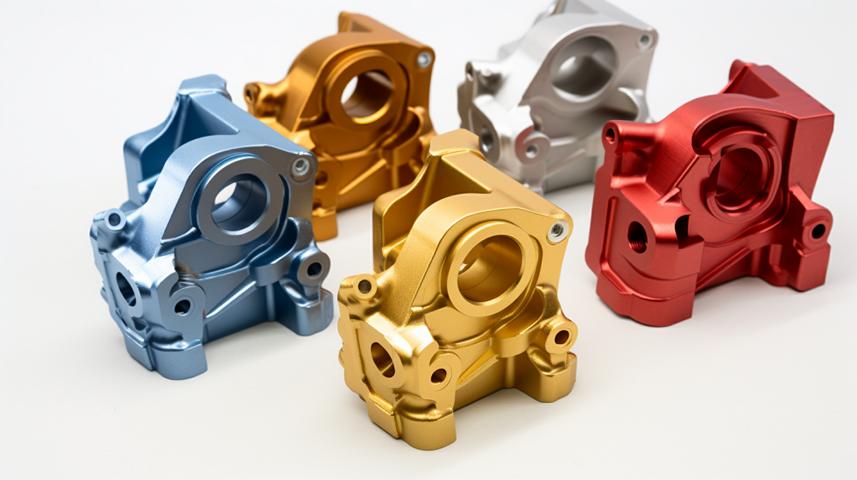
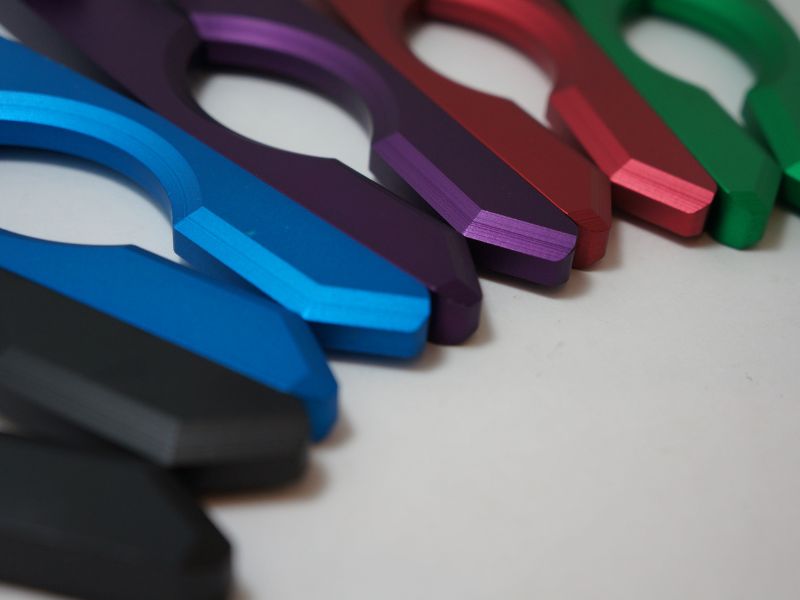
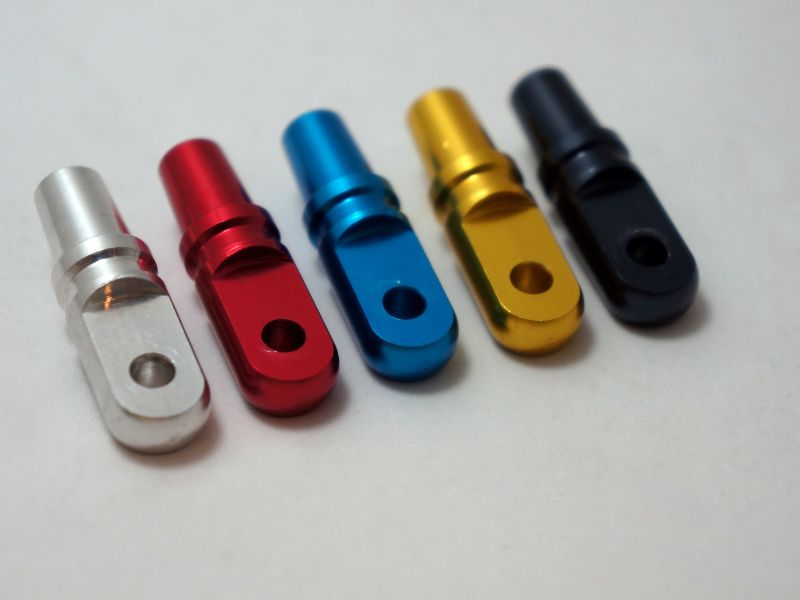
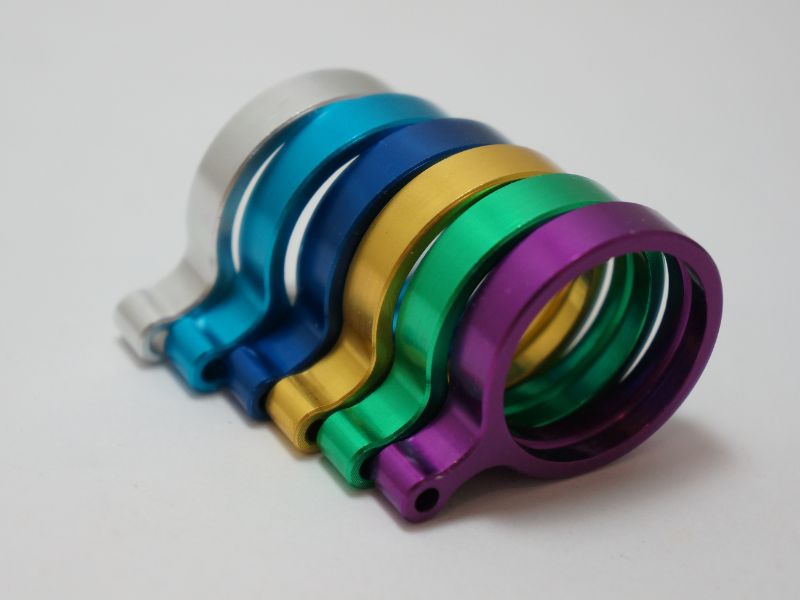

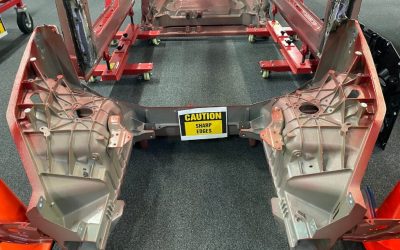
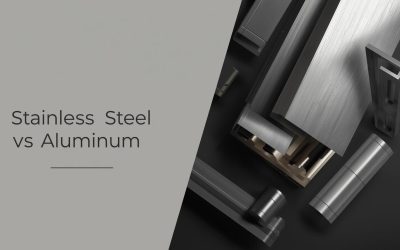

0 Comments